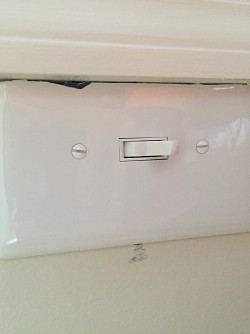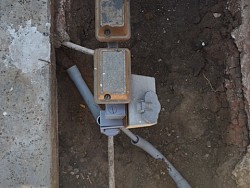4 Important Bathroom Exhaust Fan Facts
 A well-functioning exhaust fan is a bathroom essential. It protects your bathroom from excess humidity which would otherwise lead to unpleasant odors and unhealthy mold growth. To get the best performance out of your bathroom exhaust fan (also known as a "ventilating" or "extractor" fan), learn the right way to select, install, and maintain it.
A well-functioning exhaust fan is a bathroom essential. It protects your bathroom from excess humidity which would otherwise lead to unpleasant odors and unhealthy mold growth. To get the best performance out of your bathroom exhaust fan (also known as a "ventilating" or "extractor" fan), learn the right way to select, install, and maintain it.
Select Your Fan: Cheap is Expensive
It may be tempting to install a bathroom exhaust fan which is the lowest cost version on the market. However, as Grandma used to say, “Cheap is expensive,” meaning a small price tag tends to go hand in hand with poorer performance. In terms of a bathroom extractor fan, this is generally true; cheaper models can be both noisy and inefficient. You’ll likely find it's worth the extra cash to purchase a higher volume fan, measured in terms of cubic feet per minute. To calculate the minimum size you’ll need, take the volume of your room and divide it by 5. (For example, if your bathroom is 7 feet by 10 feet, with an 8-foot ceiling, multiply 7x10x8. Divide the result, 560 cubic feet, by 5. The answer tells you that you should install a ventilating fan of at least 112 CFM.)
When you buy a new home, it will probably come with exhaust fans already installed. However, builder grade houses tend to be equipped with the smallest and cheapest type of fan. If you experience problems with damp or mildew in the bathroom or powder room, a higher volume extractor fan is an affordable solution.
Installation: Keep It Quiet(er)
Ideally, a bathroom fan in action should not sound like a jet taking off. The amount of noise a fan will make is indicated by its sone rating, which could range anywhere from 4 (extremely loud) down to 0.5 (barely audible). Buy a fan rated 1 or less, if you’re looking for quiet performance, but be aware that you will pay more for what you don’t get (that is, excessive noise).
A good electrician will install your extractor fan correctly to minimize its sound level. Opt for 4 inch venting, which will be quieter than 3 inch. Use screws to hold it in place, because they are less likely to loosen and end up producing vibrations than nails.
Ventilation: Vent to the Great Outdoors
ESSENTIAL INFO: Bathroom fans must be vented to the exterior air, and not your unfinished attic or roof space. In cold weather, the humid air extracted from your bath will condense where it has been vented, liquefying into water. If this happens anywhere inside your home, the end result will be rotted wood and moldy surfaces.
Maintenance: Keep It Clean
Over the course of normal use, your extractor fan will inevitably become clogged with dirt. Regular cleaning will maintain its efficiency and improve the ambient air quality. Vacuum the grille every 3-6 months. If deep cleaning is required, start by turning off the power supply at the electrical panel. Remove the fan’s cover and wash with hot soapy water. Use a small brush to get dust and debris out of the motor and fan blades, then wipe the blades with a damp cloth. Take care that all parts are thoroughly dry before you reassemble the fan and reconnect the electricity.
Laura Firszt writes for networx.com.
Updated February 28, 2018.
Looking for a Pro? Call us (866) 441-6648

Electrical Average Costs
Electricians Experiences

Electrician Restarted The Lights In My Outdoor Kitchen

Electrical Installation As Part Of A Living Room-to-Office Conversion



